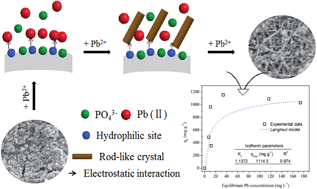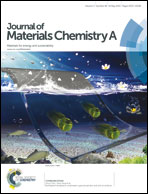Ultra-high capacity and selective immobilization of Pb through crystal growth of hydroxypyromorphite on amino-functionalized hydrochar†
Abstract
Lead (Pb) is a ubiquitous heavy metal pollutant, and its removal and immobilization from the environment have attracted considerable attention. In this study, we prepared amino-functionalized hydrochar (AFHC) from waste biomass and investigated its adsorption and immobilization activity toward Pb(II). The results showed that AFHC exhibits high performance in Pb removal, achieving over 1000 mg g−1 removal capacity within the first 5 min of reaction, and high selectivity toward this metal ion. Notably, AFHC can efficiently remove low concentrations of Pb from aqueous solution, suggesting that it has potential utility in treatment of drinking water, especially in point-of-use water treatment in underdeveloped areas. Further investigations indicated that the robust performance of the hydrochar may be attributed to the formation of rod-like Pb5(PO4)3(OH) crystals on its surface, where amino groups function as bridges and hydrolyze to provide basic groups.


 Please wait while we load your content...
Please wait while we load your content...